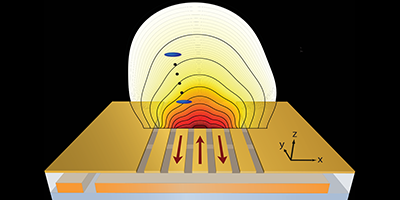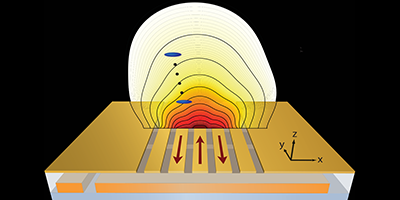Interferometry with Entangled Atoms
Atom interferometers provide highly sensitive measurements of gravity, electromagnetic fields, and other fundamental parameters. However, these devices face a fundamental quantum limit in how precisely they can measure quantities on fine spatial scales. A new experiment overcomes this limit by entangling the atoms in the interferometer device. As described in Physical Review Letters, the research team demonstrates their technique by measuring a microwave field with micrometer spatial resolution.
Atom interferometers utilize the wave nature of atoms. The devices split atoms into two separate paths and then recombine them to form an interference pattern that can reveal information, for example, about the local gravitational field. But atoms have a particle nature as well, which implies that each atom records a discrete value when measured. This discreteness leads to “shot noise” that in most cases can’t be reduced below the so-called standard quantum limit (SQL).
The SQL poses a particular problem for high spatial resolution atom interferometry, in which the small probe volume can only accommodate a small number of atoms (typically a few thousand). Caspar Ockeloen and colleagues from Basel University in Switzerland have used atom entanglement to lower the noise level times below the SQL. The team starts by trapping a small cloud of rubidium atoms micrometers above a chip that generates a microwave field. This field induces collisions between the atoms, so that different atoms’ states become strongly correlated, or entangled. Then, a set of radio pulses splits the atoms along two different paths. The resulting interference pattern provides a measurement of the microwave field generated by the chip. High-resolution measurements of this kind could better characterize the performance of microwave circuits in communication technology. – Michael Schirber





